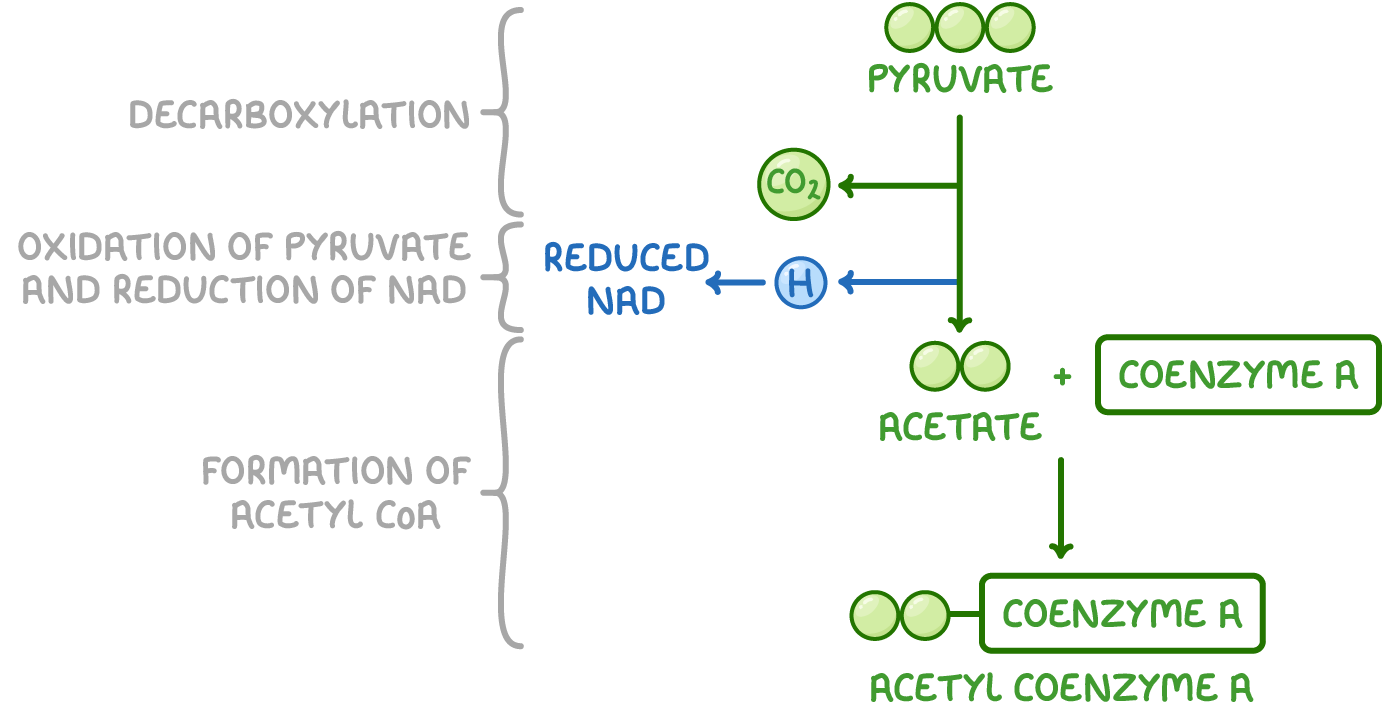Link Reaction
This lesson covers:
- Where the link reaction occurs
- The main steps of the link reaction
- The reactants and products of the link reaction
The main steps of the link reaction
The link reaction, which is sometimes called oxidative decarboxylation, takes place in the mitochondrial matrix. It connects glycolysis, which occurs in the cytoplasm, to the Krebs cycle, which occurs in the mitochondrial matrix.

The link reaction has several key steps:
- Active transport of pyruvate - Pyruvate from glycolysis is actively transported into the mitochondrial matrix by specific carrier proteins.
- Decarboxylation - In the mitochondrial matrix, each pyruvate molecule is decarboxylated, losing one molecule of CO2.
- Removal of CO2 - CO2 diffuses out of the mitochondria as a waste product.
- Oxidation of pyruvate - Two hydrogen atoms are removed from pyruvate to form a two-carbon molecule (acetate).
- Reduction of NAD - The hydrogen atoms are used to reduce the coenzyme NAD, forming reduced NAD (an electron carrier).
- Formation of acetyl CoA - Acetate binds to coenzyme A, forming acetyl coenzyme A (acetyl CoA).
Reactants and products of the link reaction
Reactants of the link reaction:
- Pyruvate
- NAD
- Coenzyme A
Products of the link reaction:
- Acetyl coenzyme A
- Reduced NAD
- Carbon dioxide
Acetyl coenzyme A delivers the acetyl group to the next stage of aerobic respiration, known as the Krebs cycle.